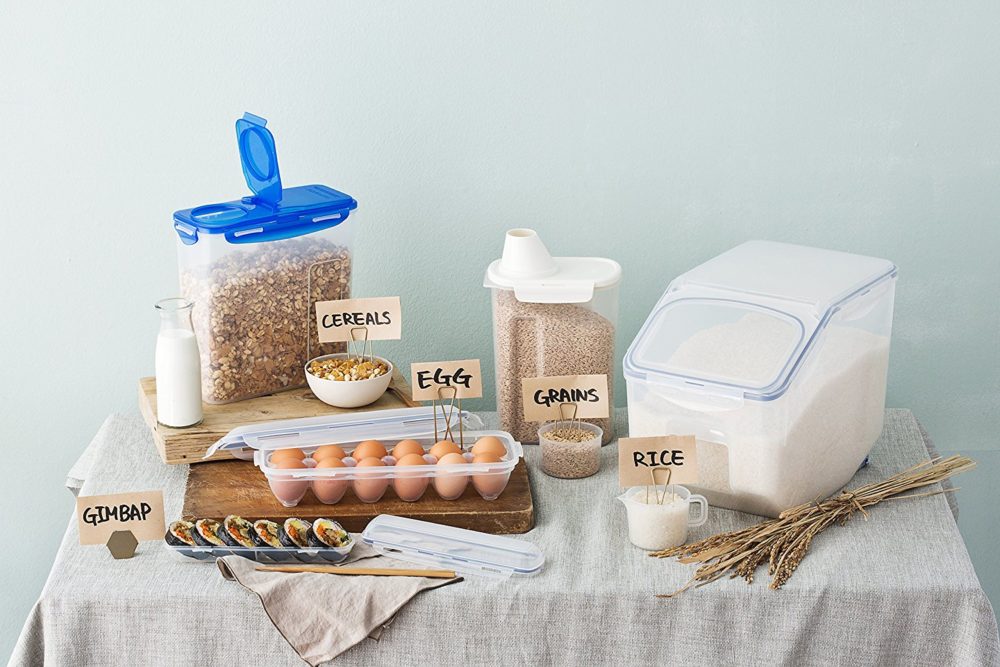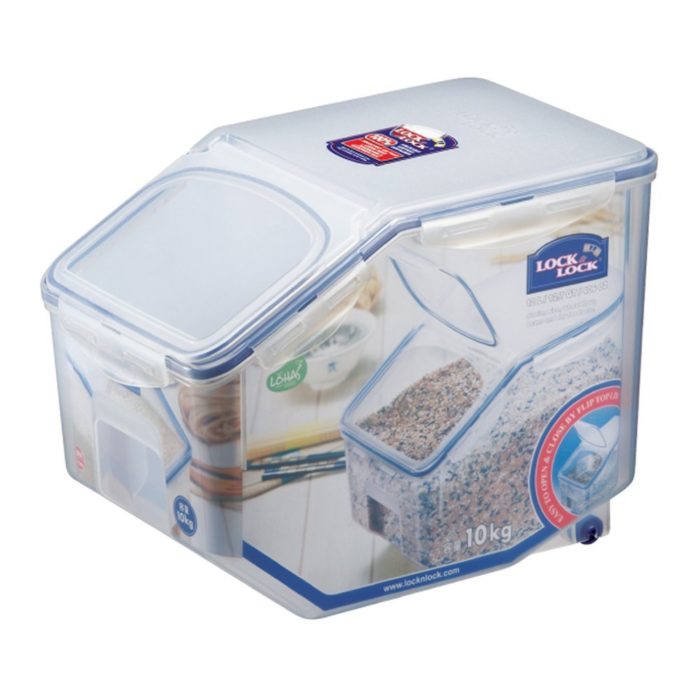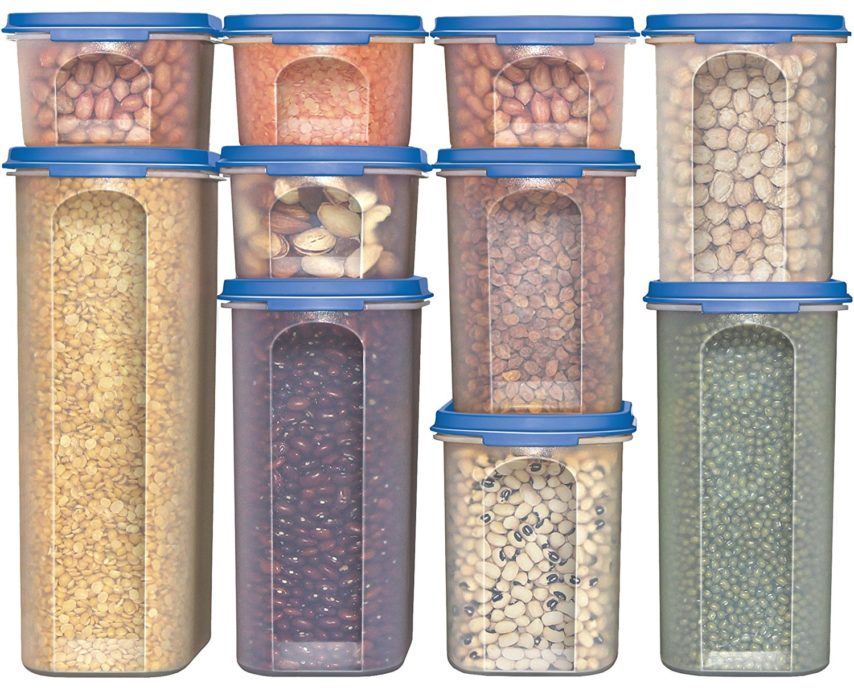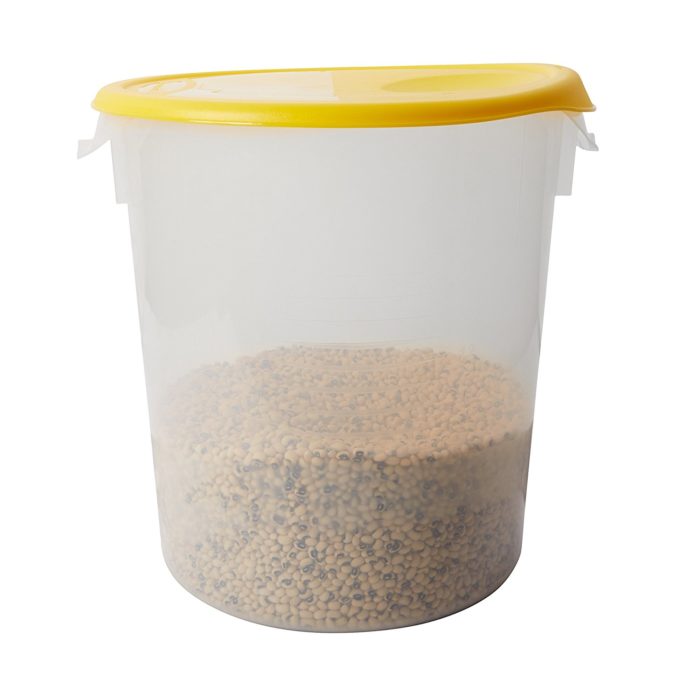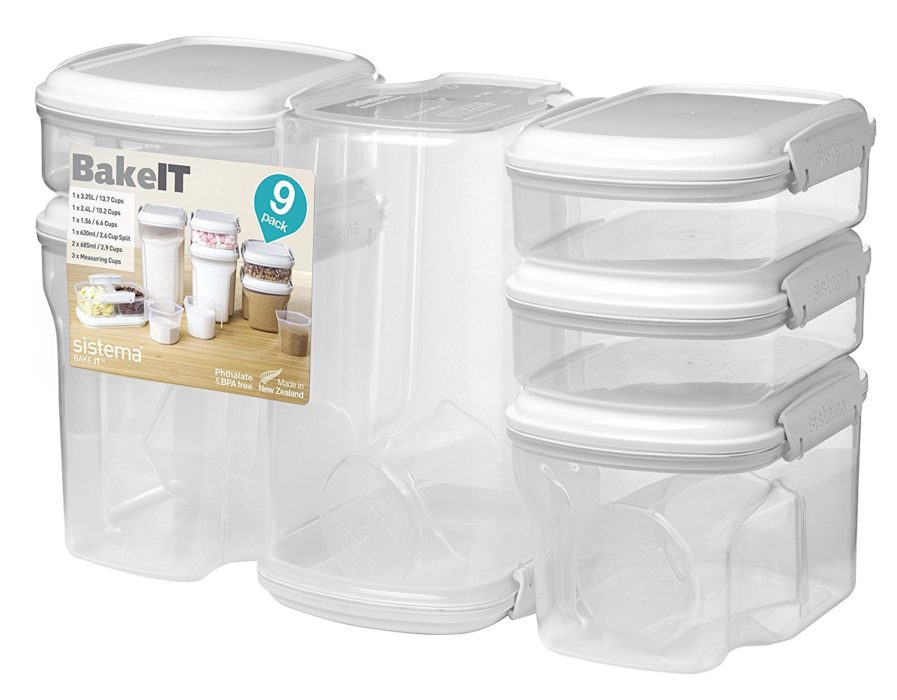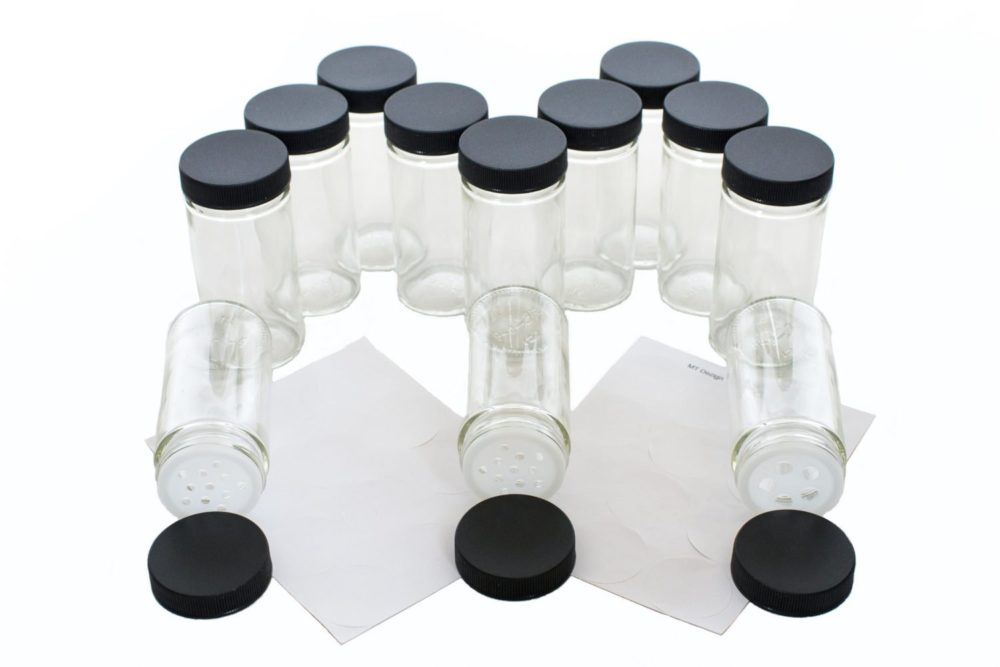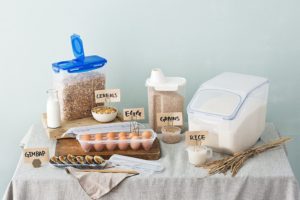There are so many benefits to buying food in bulk, from Environmental Impact to Emergency Preparedness to Economics. In this article, we’ll walk you through one of the simplest and least expensive ways you can reduce your carbon footprint while easing your family food budget, and show you some of the best food storage containers available on the market. If you’re ready to take the next step in reducing your impact on the planet and cut your family’s food budget, switching to bulk foods is the proverbial ‘Win-Win’!
5 Best Food Storage Containers
First, we’ll start out with our top product picks. After that, we dive into bulk food storage and get into some helpful tips.
1. Lock and Lock with Wheels
First up is the Bulk Storage Bins Food Storage Container with Wheels brought to you by Lock&Lock. Four lock system tamps down tight for freshness, silicone seal in the lid, available with wheels or without, perfect for sizable quantities of flour, sugars, and cereals. These fit nicely inside a kitchen cupboard.
2. Milton STACKO Airtight Dry Food Container with Lids
This 10 container set features airtight, durable, and is a perfect size to accommodate those bulk items you use in smaller quantities. We have a set of these in our kitchen cupboards right now – we use them to hold smaller quantities of things like pasta, cereal, coffee, sugars, etc., regardless that we may have a 5-gallon pail of the same thing in our big-bulk area. We love that you get 4 different sizes in a set. They are BPA free and dishwasher safe.
3. Rubbermaid Commercial 22-Quart Round Storage Container
Rubbermaid is a trusted brand for storage, and these commercial 22-quart round ‘bench bucket’, excellent choice for beans, rice, legumes, grains, and pet foods. Easy-grip handles, create nesting for easier storage. You’ll rarely see a commercial kitchen without at least a few of these.
4. Sistema Bake It Food Storage for Baking Ingredients
We did not know about this system before doing research for this article, but now we totally want one! The exact right sizes for the quantities of flours and sugars one normally has on hand for baking, all in a trim stacking set that’s easy on the eyes. We feel more organized just looking at it.
5. Living Whole Foods 5 Gallon White Bucket & Lid
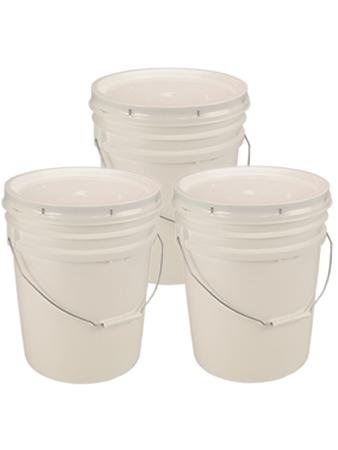
Yep, a bucket. Heavy duty and stackable, these have a rubber seal inside the lid. Make sure you’re buying ‘food grade’, though – not the ones meant for paint. Good choice for grains and flours.
Bonus: Other Solutions
Here are some other complimentary storage products.
How to Store Bulk Spices
In and discussion of bulk dry food storage containers, one should not forget to mention Herbs and Spices: as expensive as these are you’ll want to pay special attention to protecting them. Besides keeping them in a ‘cool, dry place’ spices and herbs should also be kept in the dark, as full light will diffuse them and diminish their flavor.
Our favorite way to store them is in small glass bottles with lids and ‘shaker rings’ (see below). Remember: only buy the quantity you’ll use in a 3-6 month period. Spices lose their potency quickly.
Where to Stack it All
As helpful as bulk storage containers are, they do take up quite a lot of space. Think about where you’ll be able to place them in your home and how often you will be accessing your bulk food.
If you do have a walk-in pantry, consider yourself lucky! Here’s some shelving that will spruce up your organization in any space.
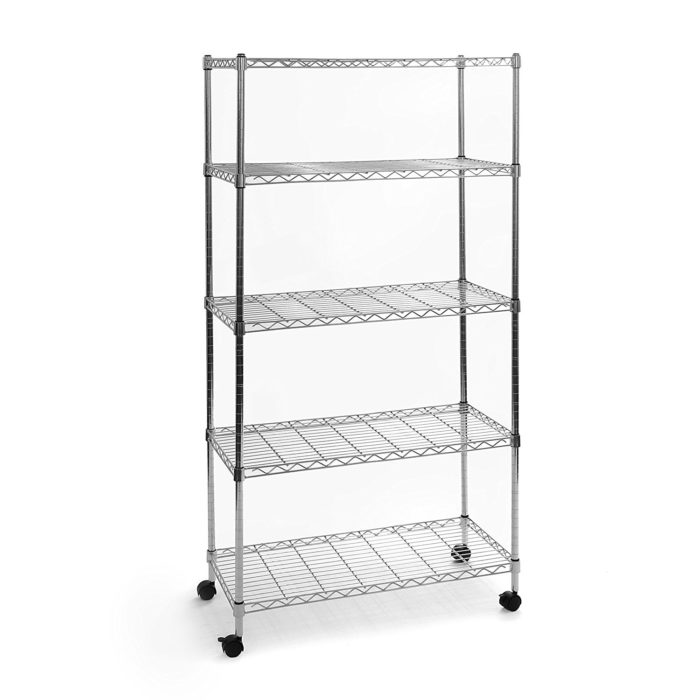
What Are Bulk Foods?
Bulk Foods are non-perishable food items that are sold in large-quantity containers that consumers can purchase in any amount they like at reduced prices. Typical offerings include rice, grains, flours, pastas, soup mixes, beans, legumes, cereals, trail mixes, sweeteners, dried fruits, nuts and seeds. Bulk food selections will often have snacks and treats as well.
Bulk foods can be found everywhere from the huge health-conscious Whole Foods-type establishments to your local health food store and even your regular grocery chain. Our rule of thumb when choosing a bulk food venue is to pick the ones that specialize in organics and that have the highest turn-over of product so that our selections will be fresh.
Bulk selections also include herbs, spices, sea salts and a variety of peppercorns and seasoning mixes. Look for bulk teas and coffees as well.
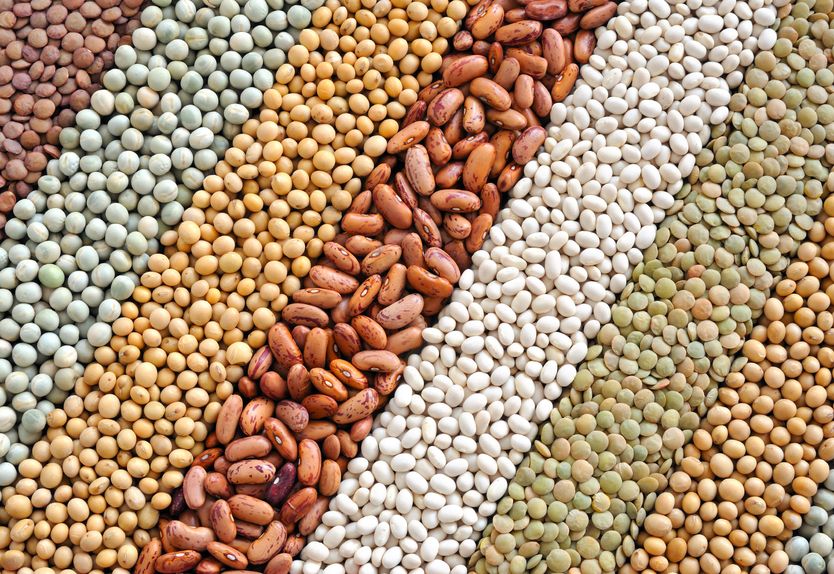
Why Should I Buy Foods in Bulk?
Oh, let us count the ways that buying in bulk is a better bet than the overly-packaged, conventional shelf offerings of most grocery stores!
The above-mentioned packaging.
Have you ever lamented over how much cardboard and plastic surround your food purchases? Bulk buying can help eliminate literally tons of waste that would eventually end up in landfills. Bulk goods require less overall transportation, because they can be packed more densely on a truck in large sacks and boxes as opposed to individually packaged items. The manufacture of materials for packaging yanks trees from our forests, dumps nasty contaminated water into our streams, and pumps obscene levels of CO2 into our atmosphere.
You save money.
Bulk foods are nearly always less expensive because you’re not paying for that relentless packaging – or the fancy labels. If a recipe calls for just two tablespoons of an unfamiliar item, chances are good the rest of the 2-cup quantity you got from a box is going to sit in your pantry for months until you finally toss it. Bulk buying lets you purchase just the amount you need, so there’s less food waste.
Access to more organics.
In certain stores that specialize in organics, the bulk section will usually be as well.
Healthier and fresher ingredients.
In higher volume stores, the bins are replenished constantly, so the food you bring home will be much fresher than what you buy in a box off a shelf. Furthermore, you can store pet food in these types of containers. Surely pets enjoy fresh kibbles!
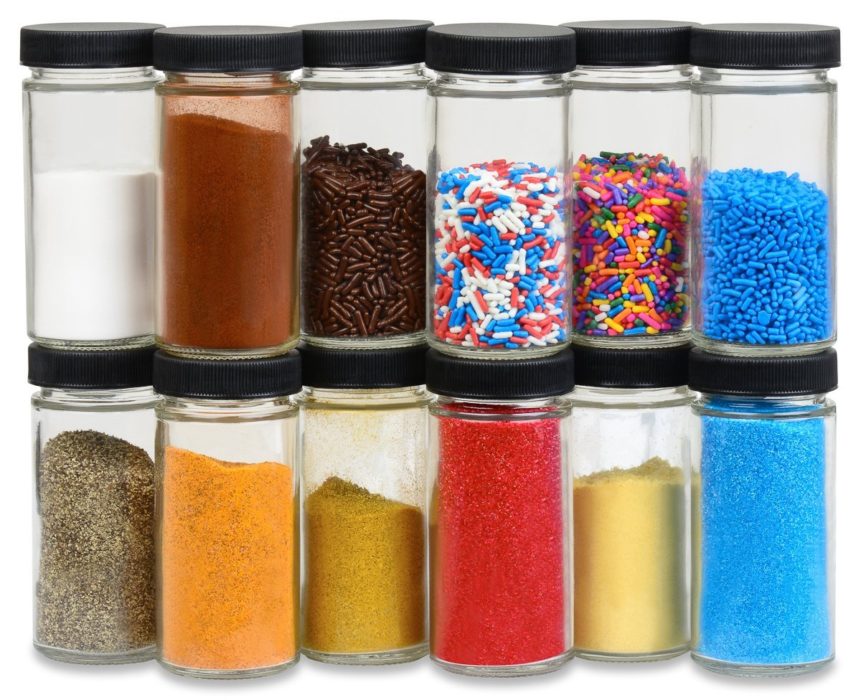
Shopping for Bulk Foods
Quick Preparation List
Shopping for bulk foods is no more difficult than the conventional mode of choosing products from a shelf. Basically you choose your item, fill a bag with the quantity you want to take home, label it with the bin number and toss it into your cart. That being said, we do have a couple of handy tips that will help smooth the process:
- Bring a Sharpie and a clipboard from home. Stores will often tether the pens in the bulk section to keep them from disappearing, but they make the strings too short to actually write with and frustration ensues. Ditto trying to write a bin number onto a skinny twist-tie while using nothing but the palm of your opposite hand as a writing surface.
- Make sure when making your shopping list at home that you include quantities. Write “3 Tablespoons Arrowroot Powder” rather than just ‘Arrowroot Powder’, otherwise you lose the benefit of buying only what you need.
- Date your purchases, so that you may more efficiently rotate your stock.
Storing the Storage
Where should I store my bulk food storage containers?
A cool, dry place is the standard response, but beyond that the answers will vary depending on each family’s usage and needs. Most of us no longer have ‘root cellars’, the ‘cool dry place’ our forbearers nearly always had beneath their homes for food preservation, but we do have something they didn’t have: air conditioning. Seventy degrees or below is generally considered to be optimal, and in most homes that’s about the temperature in the kitchen pantry anyway.
While smaller bulk food containers will fit comfortably on your kitchen shelves, some folks prefer a dedicated pantry, closet or area for their bulk items. A large walk-in pantry is the coolest thing ever, but if you don’t happen to have one the small closet beneath the stairs, the lower shelves of a little-used linen cupboard or a corner niche on the far side of the kitchen will do just fine.
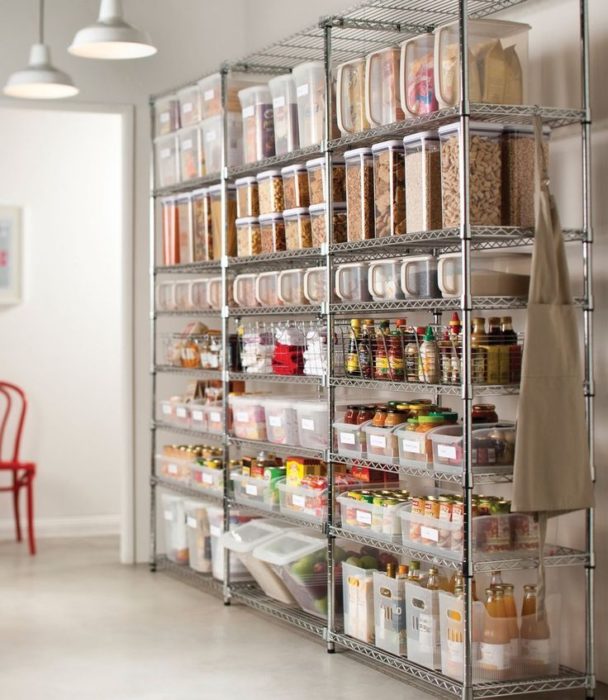
Something to keep in mind, however, is whether there is an electric or gas appliance of any kind in the area you wish to store your food storage containers. Freezers, furnaces and washers /dryers can generate more heat than you think, and cause premature spoiling of your foods.
Another factor to consider when choosing your area is that you’ll want to keep your storage containers up off the floor if at all possible, to protect your purchases from vermin. Even if you put them on shelves, it’s best if the container does not touch the wall behind it. You’re spending a good chunk of change on your bulk food, and it pays to protect your investment.
If you’re setting your space up from scratch, it never hurts to consider how the big kids (i.e. restaurants, hospitals, etc.) store their bulk foods, and make your container / shelving purchases accordingly. While our pantry plan may not be as elaborate (or organized!) as the one pictured here, the tidiness of it all makes our little bulk-buying hearts go pitter pat, and gives us inspiration for our own space.
Buying Food in Bulk for Home Use vs. For Emergencies
The best food storage containers will differ depending on long you expect or need your bounty to last. There are dozens of sources for freeze-dried ‘emergency foods’ that are stored in their own vacuum-sealed, long term food storage containers, but that’s definitely a subject for another article. For the sake of staying on topic we will today discuss only how to store bulk foods in a home setting.
So What are the Best Food Storage Containers?
The best long term food storage containers for your needs will be determined largely by what types of foods you’re storing, how much of it you’ve purchased, and how often you’ll need to access the containers. Cereals, nuts, dried fruits and pastas are examples of foods you may use every day, and having to haul a 30 lb bucket of oats out of the pantry every morning to make the kids breakfast isn’t practical, but a small 2-quart container of something you run out of every week doesn’t make sense either.
Good containers are an investment, so if you’re serious about giving the bulk lifestyle a try, take the time to evaluate your individual needs and create a vision for your bulk food storage space before bringing home the dry goods.
Ideally, the best food containers are airtight, watertight, and BPA free. Some of the best airtight containers for food storage are actually commercial products, made available for home use through professional kitchen retailers as well as online venues.
The best long-term food storage containers will have lock / seal systems to ensure their contents do not become contaminated. If you haven’t already, check out the ‘Best Of’ list above to plan your dream bulk food storage pantry.

Susanne Robertson is a freelance writer living in Ashland, Oregon

